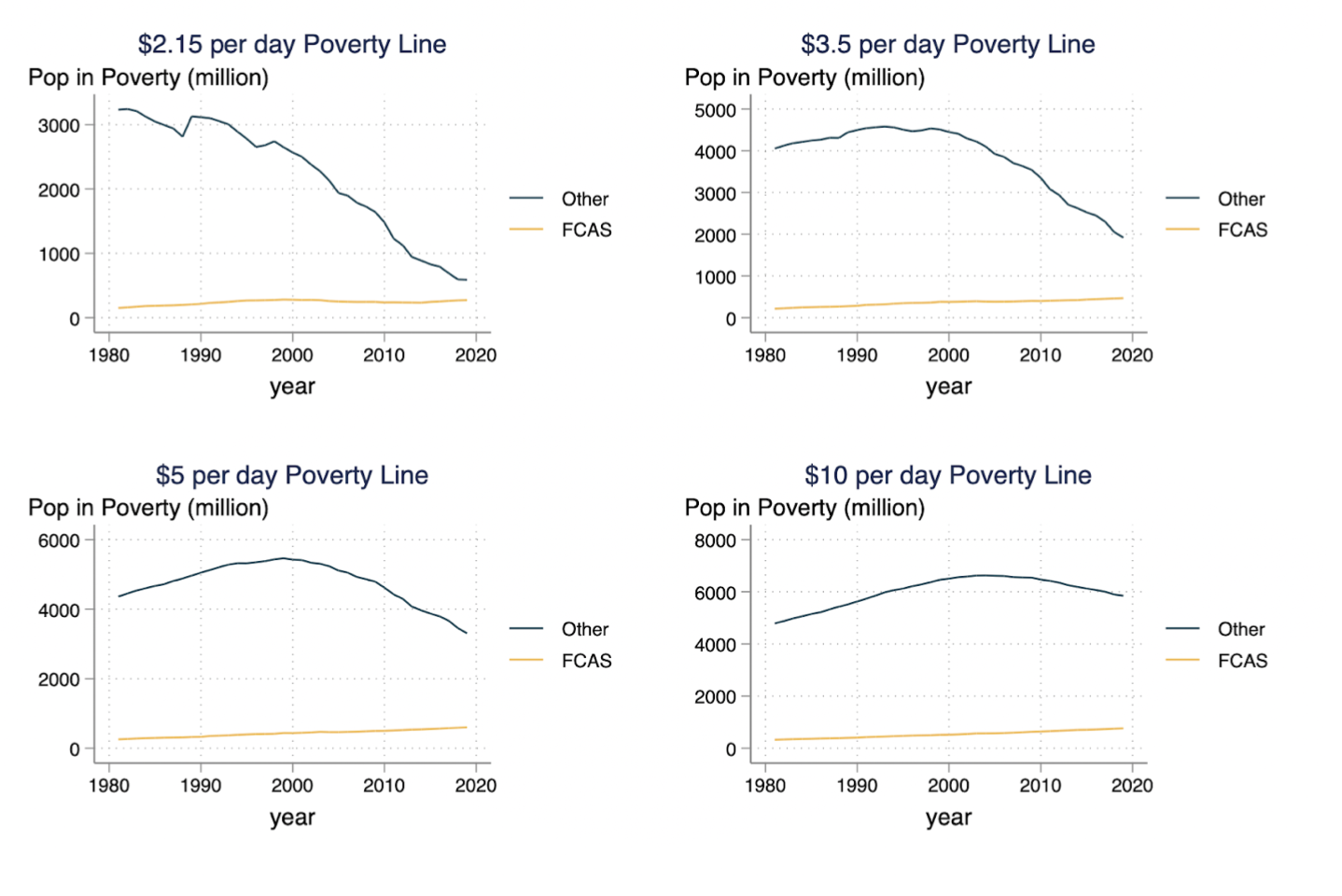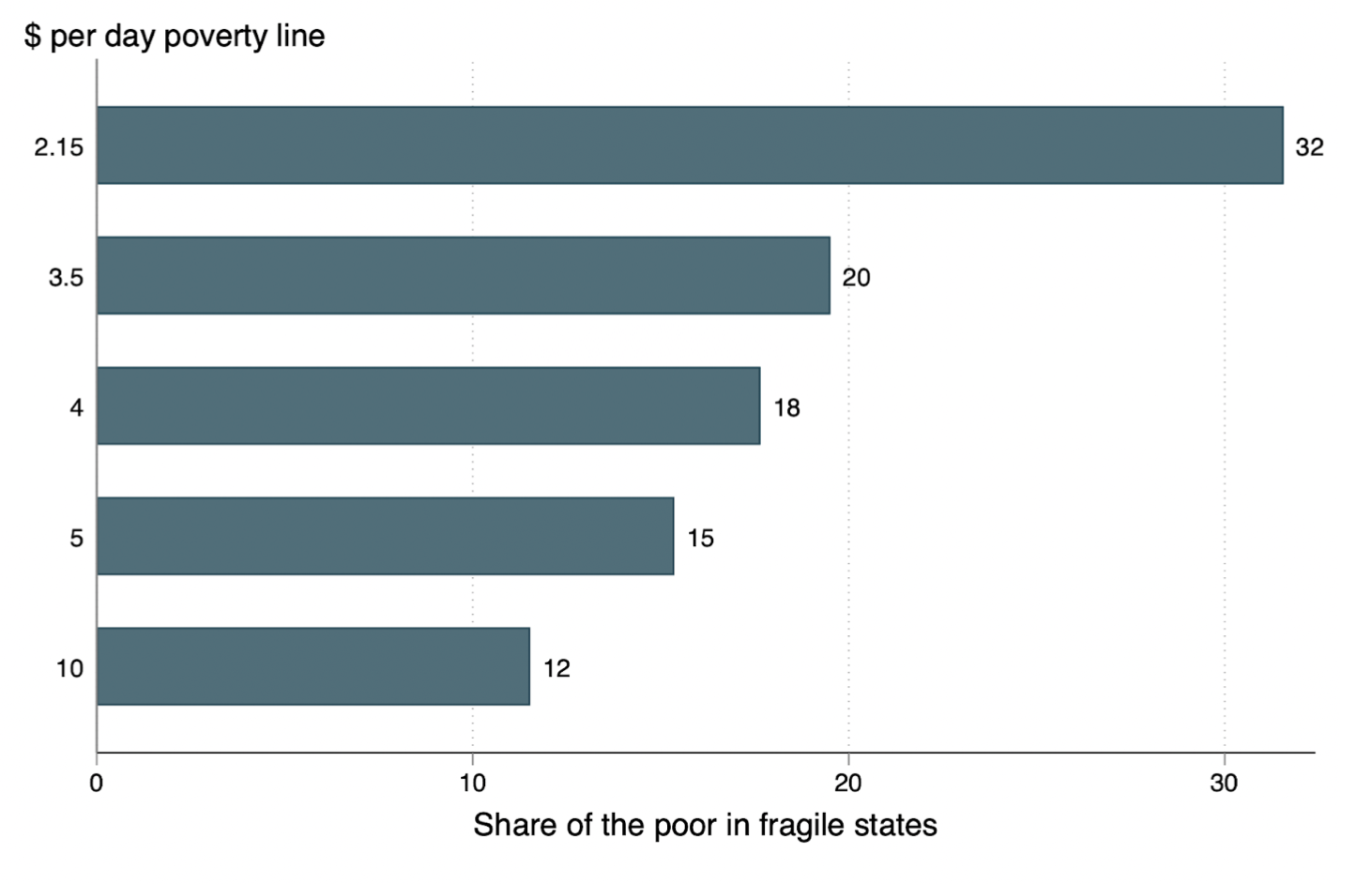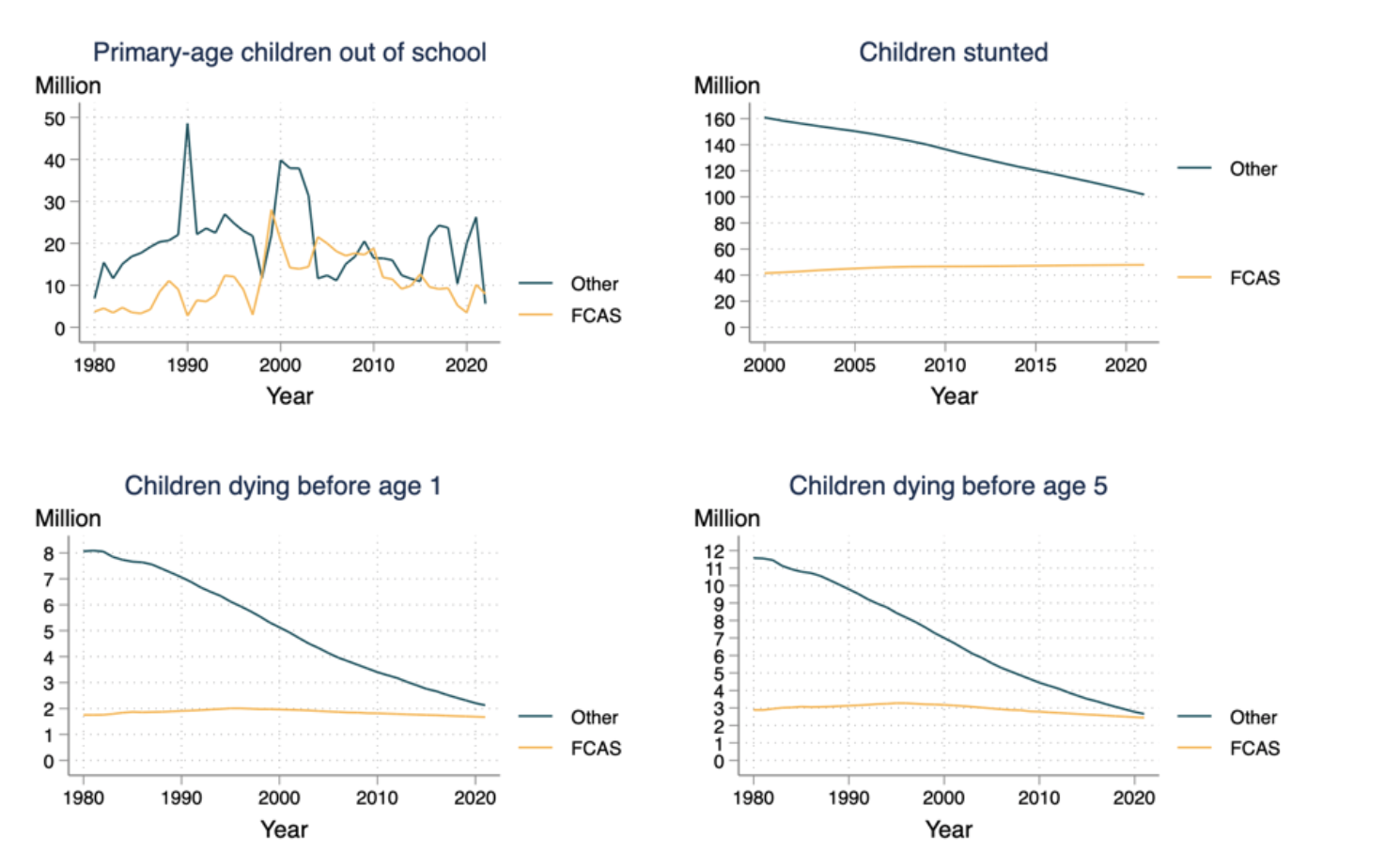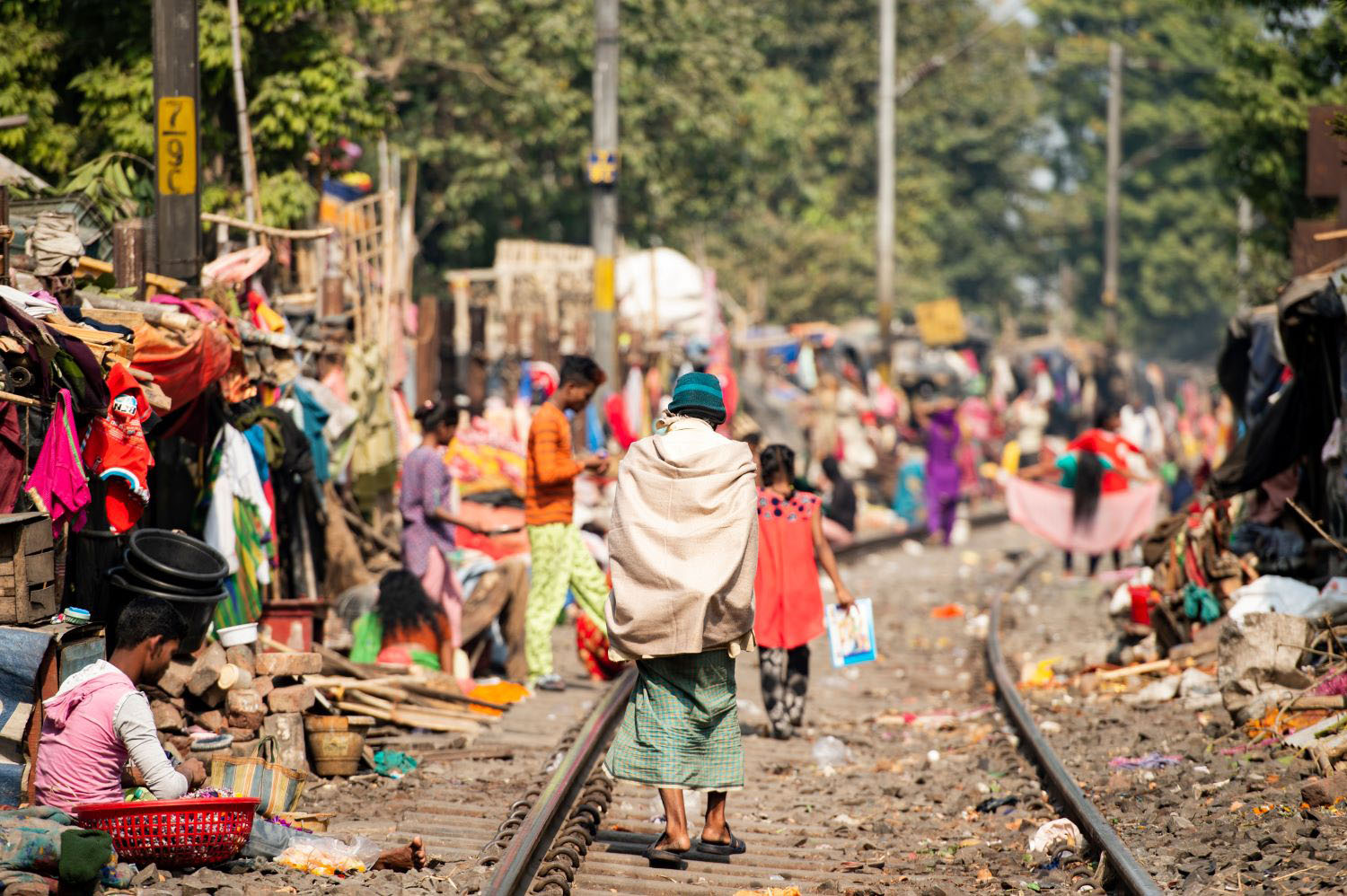Nic Hailey from International Alert presented an interesting challenge at CGD last week. He argued that whilst there has been a big change in the share of the global extreme poor who live in fragile and conflict-affected states, there hasn’t been a corresponding change in the aid and development sector. In his analogy, our customer base has shifted but our business model hasn’t. His basic facts are not wrong, and you may have heard them in various places, for example:
“by 2030, half of the world’s poor will live in fragile states”
— former UK Prime Minister David Cameron, 2018
“By 2030, more than half of the world's extreme poor will live in countries characterized by fragility, conflict, and violence (FCV).”
— World Bank, 2020
“Sixty percent of the global poor will live in fragile and conflict-affected states”,
— Homi Kharas and Meagan Dooley, 2022
“50 percent of the world’s extreme poor now live in fragile and conflict states. It’s going to become 66 percent”,
— President of IRC David Miliband, 2024
The one wrinkle in the argument is that it is based on the fairly arbitrary extreme poverty line of $2.15. This is not a new point, but people just above the line on, say, $2.20 per day are hardly living in the lap of luxury. Poverty lines in rich countries are more like $15 a day. I would argue that we can also afford to be concerned with people living on three or four dollars per day.
So, what happens to the share of the world’s poor living in fragile states if we consider different poverty lines? The figures below are calculated with data from the World Bank’s “Poverty and Inequality Platform”. The trends at the $2.15 poverty line are indeed striking. But they are somewhat less striking at a $3.50 or $5 poverty line.
Figure 1: Trends in the number of people in poverty in fragile and other countries

Looking at the most recent comprehensive poverty data for 2019, a third of the $2.15 poverty line extreme poor are in fragile and conflict-affected states. However nudging up the poverty line to only $3.50 reduces the share in fragile states to 20 percent. A poverty line of $5 reduces the share in fragile states to 15 percent.
Figure 2: Share of the world’s poor in 2019 living in fragile states

Income poverty is hard to measure. It is sensitive to cross-country price comparisons, which are difficult conceptually and empirically, and sensitive to arbitrary lines.
What happens if we look at other measures of welfare? I picked four: the numbers of children out of school: the numbers so malnourished that they are physically stunted (too short for their age); and the numbers who die before the age of one or five. Here the picture is more mixed. Already around half of the millions of children dying before the age of 5 live in fragile states. And these states are also home to around a third of the world’s stunted children. So the most acute problems are indeed concentrated in fragile states.
Figure 3: Child Health and Education in Fragile States

It is most likely true that by 2030 most of the world’s extreme poor (by current standards) will live in fragile states, and this will be accompanied by most of the world’s children who die young, usually of preventable causes. But it won’t be most of the world’s poor, according to more expansive definitions of income poverty. Perhaps we don’t yet all need to pivot immediately to an all-out focus on conflict. But the aid and development business can’t continue to ignore this real shift in its customer base.
The Stata Code used to create these figures can be found here. Thanks to Nic Hailey, Ian Mitchell, Susannah Hares, and Justin Sandefur for comments on a draft of this post.
CGD blog posts reflect the views of the authors, drawing on prior research and experience in their areas of expertise.
CGD is a nonpartisan, independent organization and does not take institutional positions.










